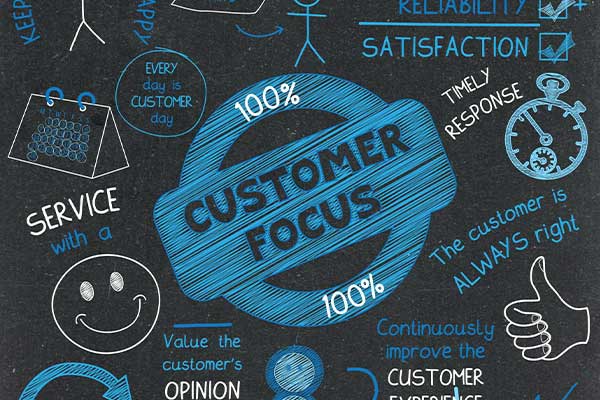The only way to make repeated sales in your business is to create products or services that suit your customers’ preferences. That is why it becomes essential to monitor customer satisfaction rates, especially if you plan to test new products or services. Thankfully, ISO 9001 can help you monitor your customer satisfaction rates. This article will discuss customer satisfaction as per ISO 9001 standard helps measure it.
What is customer satisfaction?
The ISO 9001 standard defines customer satisfaction as the degree to which customer requirements have been appropriately identified and fulfilled. If we analyse this definition, we understand that customer satisfaction is not objective.
Instead, it is a subjective measurement of judgement. Since it is not a contractual obligation, there can be discrepancies in measuring it as it will always involve a level of guesswork or assumptions. Another characteristic feature uncovered from this definition is that customer satisfaction can never be an issue that will be answered with a simple yes or no. Instead, it can encompass different levels or degrees of satisfaction.

Another added issue makes it difficult for companies to gauge customer satisfaction rates, which is related to the nature of complaints versus satisfaction. See, it will always be a rarity for a satisfied customer to call up the company and praise the product or service. However, it is ubiquitous for an unsatisfied customer to complain directly to the provider.
Sadly, sometimes a dissatisfied customer chooses to complain or give negative remarks about the company to others instead of bringing the issue up with the provider. Moreover, sometimes customers that call the provider are generally satisfied with the product or the service but wish for additional features, modifications or improvements. Hence, the very nature of customer satisfaction can be confusing.
Why do companies need to measure customer satisfaction?
If customer complaints are handled appropriately, even the most dissatisfied consumers can gain a positive attitude towards your company. How you handle complaints can positively or negatively impact your image, as word of mouth is a powerful marketing tool. Moreover, categorising customer feedback to measure customer satisfaction is also helpful in driving innovation. Many companies find the idea for the most popular products from their customers. In some cases, even failing products can be transformed into best-selling items by incorporating customer feedback.
How ISO 9001 helps companies measure customer satisfaction?
Clause 9.1.2 of ISO 9001 guides companies in measuring customer satisfaction by suggesting that companies should begin by identifying what indicates customer satisfaction, going on to find a method to collect customer data suitable to their unique needs. As per the method of collecting customer data, the documented data should be frequently reviewed, and creative solutions should be applied to further amplify customer satisfaction.

Begin by analysing the customer complaints to understand what are their real expectations. It is important to remember that customer needs analysis will depend upon the industry, organisation, and majority of the market and can even defer by country.
It is also helpful to understand the difference between needs and expectations. Needs are specifications that define the outcome, extent and nature of work, whereas expectations are the level of interaction a customer expects. So, taking the example of food service-related organisations, a customer will have expectations of low price, fast and impersonal service from a fast food joint but would have expectations of high price, average time and professional service experience from a gourmet restaurant. Needs are what an organisation should deliver, and expectations help the organisation focus on the delivery method.
To monitor and measure satisfaction, you can use the following:
• Simple rating system, a straightforward method to measure customer satisfaction, requires less commitment and effort from the respondent. Examples include using a star rating system where each criterion can help you measure quality, service or speed.
• Customer feedback surveys, which take longer and rely on the customer’scustomer’s willingness to help you resolve your customer requirement queries. Surveys with open-ended questions help you develop a deeper insight into how your customers perceive your company.
• One-on-one interviews should ideally be recorded and evaluated to help you understand customer perception.

To manage client expectations, the first component is to deliver services and products which consistently fulfil the requirements so that their expectations can become more tangible. The ISO 9001 standard helps create products that are consistent in quality, efficiency and safety, helping you address the basic needs of your target audience. The second aspect of managing client expectations is to deal with the intangible expectations of clients by creating a ” code of conduct” which helps your employees behave in a particular manner.
Once you consistently meet your client’s expectations in a tangible and intangible manner, all that remains for you is to monitor their response. A separate system should be kept in place to categorise, address and answer all customer queries, responses and feedback.
If you intend to get ISO 9001 consulting services in Australia, you can contact us.
Conclusion
To measure customer satisfaction, organisations must begin by differentiating and defining customer needs versus expectations. To meet the real expectations of the clients, organisations must consistently deliver high-quality goods or services. To meet intangible expectations, a code of conduct must be followed. Once the intangible and tangible expectations are met, customer satisfaction rates go up. A simple rating system, customer feedback surveys or one-on-one interviews can be used to measure these rates.








Users Comments
Get a
Quote